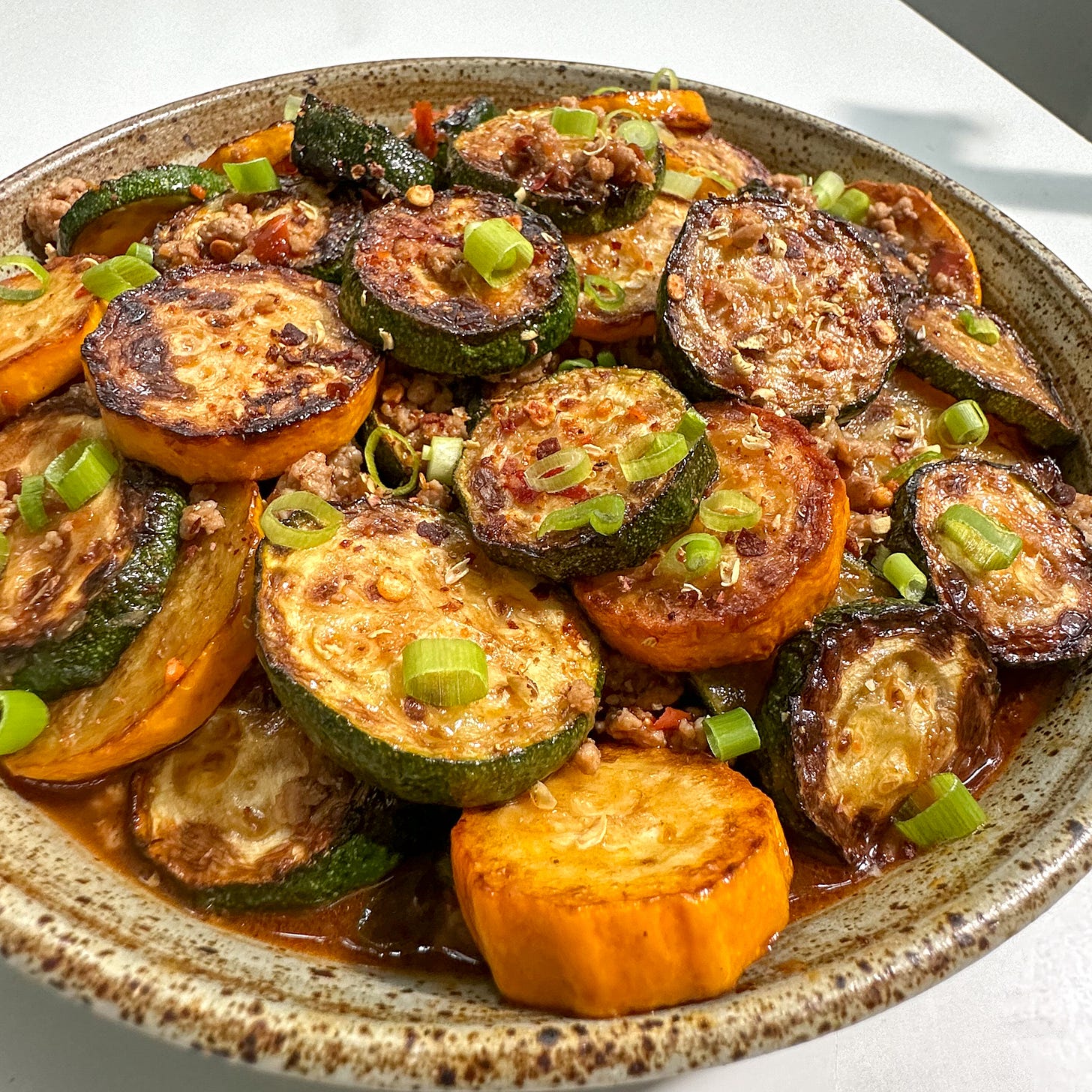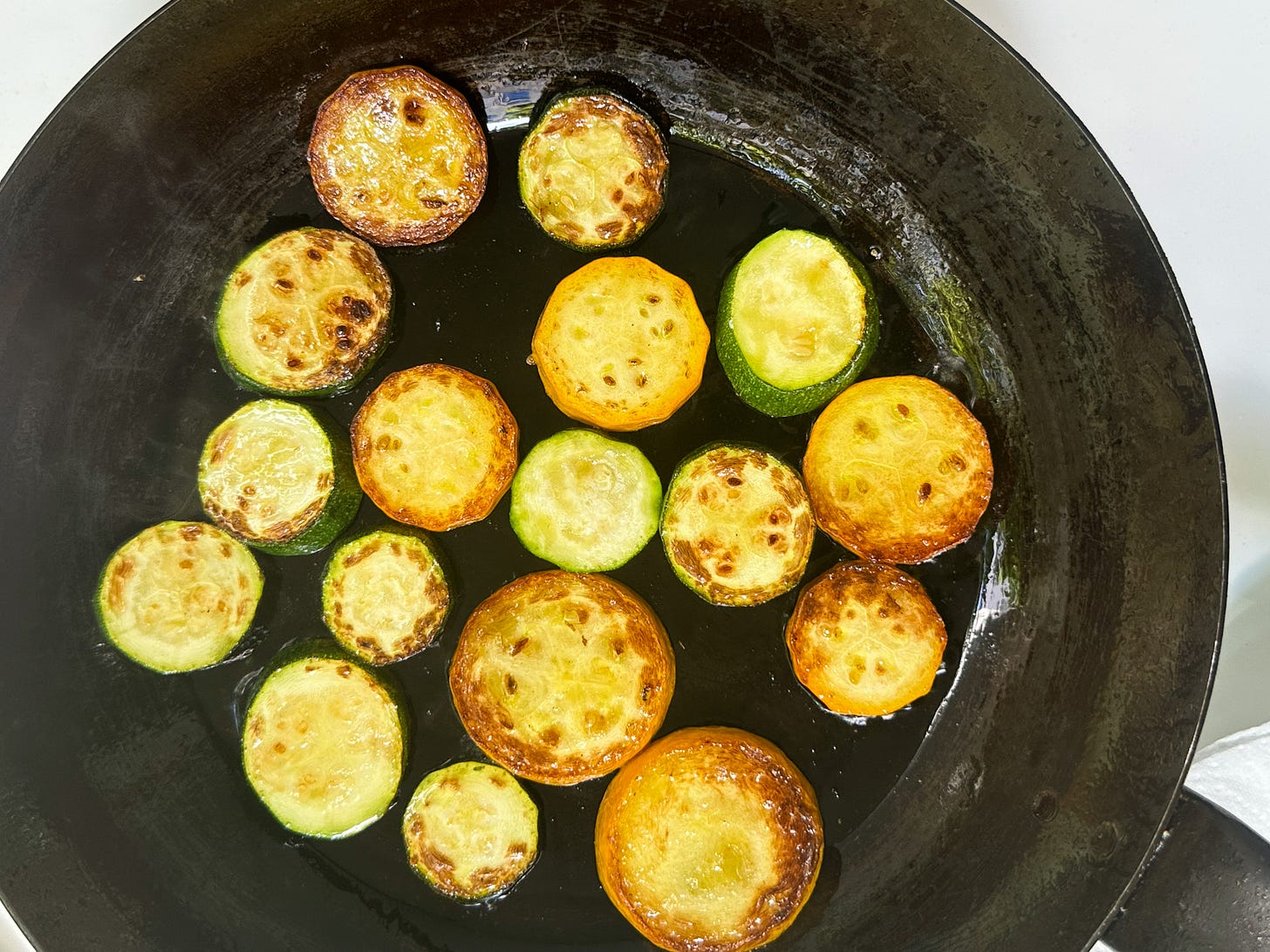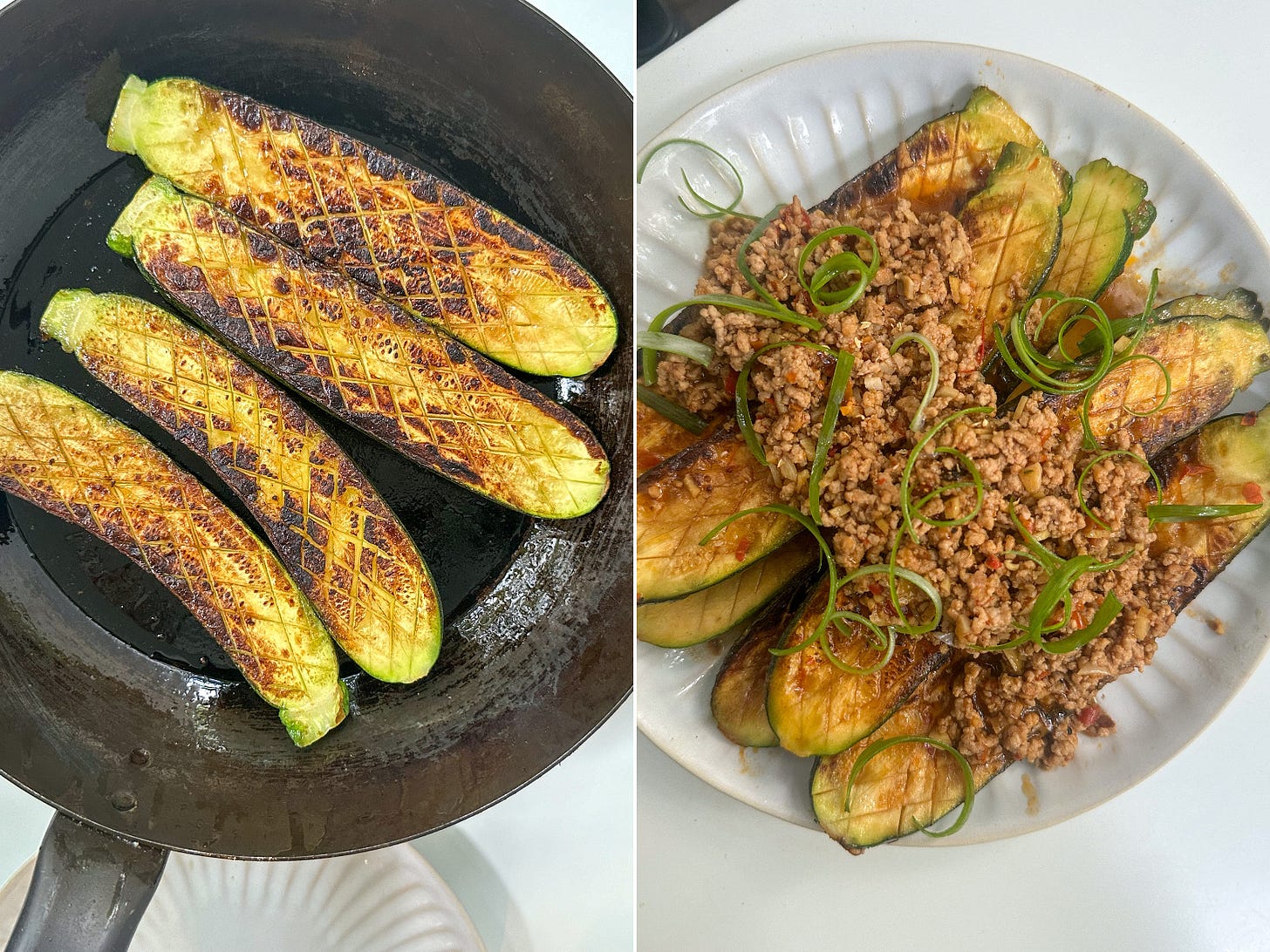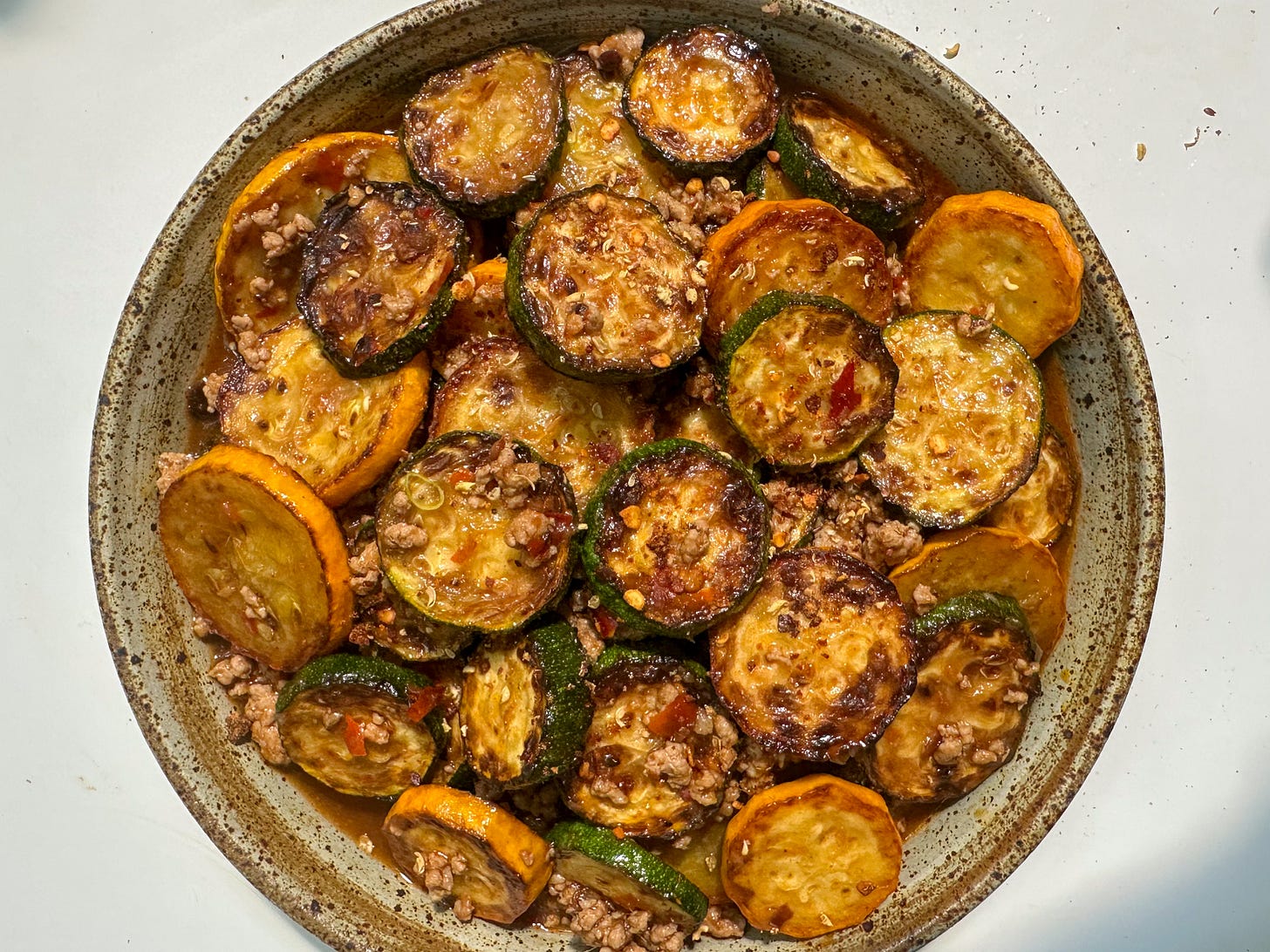Hi, everywhere food-related content is screaming summer produce, and I feel obligated to be part of it and share a zucchini recipe. If you want something snack-y, you can find a Beijing zucchini pancake recipe (with blossom!) I shared from last year, too.
I never really got excited about zucchini until discovering the charm of summer zucchini at farmers’ markets in Berlin. I grew up with seasonal locally-grown produce mostly sold by farmers in the morning markets, while supermarkets were reserved for fancy snacks. As an international student who first moved to Germany, I always went for the cheapest but limited (dare I say most bland) vegetables in discount supermarkets. When I started working, especially in the food media, I soon found joy in spending Saturday mornings wandering in markets in my neighborhoods, from Winterfeldtplatz to Kollwitzplatz. I would get a cup of freshly squeezed orange juice or a slice of spinach cheese Gözleme (Turkish stuffed flabread), and get excited over beautiful heirloom tomatoes, or the rare sight of fresh fava beans and new tender ginger.
To be honest, I’m not the most creative person when it comes to cooking zucchini. I’ve made this pasta salad every year for a few years straight and often toss them in a kimchi jjigae or simply stir-fry them. Or, grate it and make an easy pancake.
If you want to use zucchini in Chinese recipes, I find the subtly sweet and tender zucchini a perfect canvas for a rich sauce, for example, mapo sauce, or fish-fragrant sauce. The sauce was great, but I made a few iterations of the shape of the zucchini. While I wanted to make the fancy crosshatch pattern like the Thomas Keller recipe, I found the pieces to be impossible to pick up with chopsticks. So, thick rounds are the easier way to get them soft and nicely charred, even if you don’t have a grill at hand.
In the video, I mentioned that zucchini is called "xi hulu"(西葫芦) in Chinese, which translates to "western gourd," suggesting it was an imported ingredient. Many ingredients are named with "foreign"(洋 yang / 番 fan / 胡 hu) or "western"(西 xi) and a known vegetable to indicate their foreign origin, such as onion ("yangcong," foreign scallion) and tomato ("fanqie," foreign eggplant, which I read was historically similar in India; or “xihongshi” western red persimmon).
The recipe
Servings: 2
Ingredients
500 g (1.1 lbs) zucchini
1 clove garlic
1 tsp ginger
100 g (3.5 oz) ground meat (pork, beef, or vegan meat substitute)
2 tsp doubanjiang (Chinese chili bean paste)
1 tsp light soy sauce
1/2 tsp sugar
125 ml (1/2 cup) broth or water
cornstarch slurry (mix 1 tsp cornstarch and 1 tbsp water)
a pinch of chili flakes
a pinch of ground Sichuan pepper (preferably fresh)
scallion green, chopped
Instructions
Cut the zucchini into 1 cm (0.4 inch) thick slices. Mince garlic and ginger. Finely chop doubanjiang or mash with a fork until no big chunks of beans.
In a large pan, add 1 tbsp vegetable oil and heat over medium-high heat. Add zucchini rounds in a single layer, and fry for approximately 2 minutes on each side, until golden brown and lightly charred. Fry zucchini in batches. Remove from the pan and place on a plate lined with a paper towel to drain.
In the same pan, add more vegetable oil if needed. Fry ground meat until pale and cooked. Turn down the heat to medium-low, then add ginger and garlic, followed by doubanjiang. Fry until the aromatics are fragrant and the oil turns red.
Deglaze with stock. Add light soy sauce and sugar. Bring to a light simmer, then add cornstarch slurry in 2 batches. When the sauce is thick, add back the zucchini, and season with salt to taste. Garnish the zucchini with ground Sichuan pepper, chili flakes, and chopped scallion greens. Serve with steamed rice.
For fish-fragrant zucchini
If you want to make fish-fragrant zucchini, just use the same amount of zucchini instead of eggplant using this recipe. Cut the zucchini into thick strips of the same size and shallow-fry them instead of deep-frying.








My family would love these - will make!